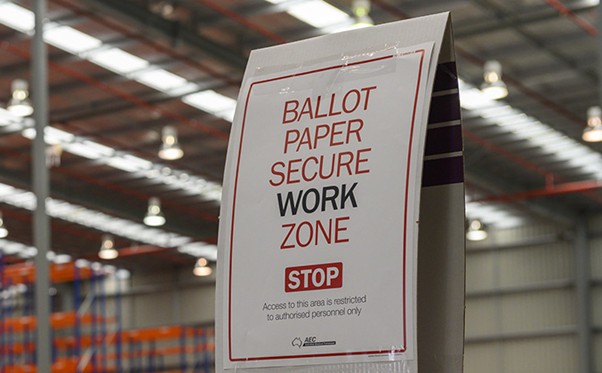It is believed there has been no new counting at the Australian Electoral Commission for the seat of Flinders today. Instead, The News understands that they are conducting a numbers of “samples” down to two-candidate-preferred, and will then likely conduct preference allocations on a three-candidate-preferred basis to see if they can distinguish between Labor’s Sarah Race and independent Ben Smith.
The race is very close, despite the Liberal Party’s Zoe McKenzie polling a much higher primary vote than the next two candidates. The real delay is being caused by the AEC’s inability to determine the second run candidate after McKenzie, with only a handful off votes between Race and Smith.
What is now being worked through is known at the AEC as a “complex count scenario”.
Usually elections are fairly straight forward. To streamline the process (mostly for the satisfaction of the television viewer at home) the AEC pre-determines who they believe will be the two highest polling candidates. They then provide data of the indicative two-candidate-preferred results to keep people well informed of the likely outcome as quickly as possible.
In Flinders, there was a problem. McKenzie and Race were selected by the AEC as the two-party-preferred candidates, but during the night a third candidate, Smith, was polling higher than Race. This caused the AEC to abandon its two-party-preferred reporting for McKenzie and Race.
Now there was a strong polling first candidate in McKenzie, and a neck-and-neck scenario for second between Smith and Race.
The solution, although time consuming, is instead of running the planned two-candidate-preferred contest, the AEC runs a three-candidate-preferred contest. And that is what it appears will be undertaken in the electorate of Flinders.
The process involves sorting votes into piles for three candidates instead of two.
Like the two-candidate-preferred count, ballot papers go into the pile based on who received the highest preference. In practice, this means we set aside ballot papers with first preferences for the three leading candidates, then the AEC takes the ballot papers with first preferences for the remaining candidates and allocate each ballot paper to one of the three leading candidates based on the second preference on that ballot paper (or the next preference available for one of the three candidates). Then they tally up how many votes each of the three candidates have to understand who the likely winner will be, and who the top two candidates will be.
Once the two leading candidates are determined the legislated two-candidate-preferred count will be conducted, which as always is followed by the full distribution of preferences.
This scenario occurred for two seats in the 2022 federal election; Brisbane (Queensland) and Macnamara (Victoria). In Brisbane the scenario was very similar to what we now see in Flinders. One candidate received 37 per cent of the primary votes, however the next two candidates received an almost identical number of primary votes – their totals only differed by 11 votes. A three-candidate-preferred count was required to determine which of the other two would be excluded from the count first, with that candidate’s votes then being distributed into a traditional two-candidate-preferred count.
Of course, with the unknown of where other candidate’s preferences will go, we still have a long road to travel to find out who will be the next Member for Flinders.




